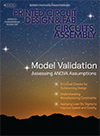Features Articles
 Respinning a board to eliminate PTH parts can pay off in production.
Respinning a board to eliminate PTH parts can pay off in production.
When an electronics manufacturing services (EMS) provider is involved in developing a new product, it is easy to provide design for excellence (DfX) recommendations that align with Lean manufacturing philosophy.
Addressing manufacturability or testability issues associated with legacy products is much more challenging, however. The reasons printed circuit board layout or product design choices may not be optimal are many. Design cycles have been compressed and design resources have been cut at many OEMs. When layout or product development is outsourced to a third-party design team without manufacturing familiarity, the result may be a PCB assembly (PCBA) that meets form, fit, function and cost recommendations, but ignores industry standard design rules, sole sources much of the bill of materials (BoM) or requires unnecessary processing.
SigmaTron’s new product introduction (NPI) process evaluates these issues as new projects are onboarded through a combination of an engineering team review and automated checks through a third-party design tool. When improvement opportunities are identified, the team can provide redesign or PCB layout services to correct the issues.
 Three road trips underscore the importance of connecting.
Three road trips underscore the importance of connecting.
Recently I traveled to the Atlanta area on business. The meeting was outside of Atlanta, in a suburb, a fair distance from both the airport and downtown. Given that distance, and Metro Atlanta traffic, I had a perfect chance to observe life from the back of the ridesharing car while the Lyft driver navigated and fulminated about 8 mph traffic and the consequent decline of civilization.
It’s remarkable what you can observe in 90 freeway minutes while not driving. The molasses pace of “rush hour” illuminates a new world beyond the dashboard, much of it disagreeable. Like billboards. Scads of billboards. A throwback to the visual blight of the pre-Earth Day, zero-regulation, strip mall ’60s, in the eyes of this Southern California-raised resident. Easily 100 billboards graced the shoulder and assaulted the senses between Hartsfield Airport and my hotel. Lest I doubted the evidence of my own eyes, the return journey from hotel to airport, 48 hours later, confirmed that my triple and quintuple takes weren’t a mirage. Their sheer number paid throwback tribute to the nonregulatory state. Something we had in California when Lyndon Johnson was president, which we the people had the good sense to banish.
 Why a relatively unknown technology might be right for static bend applications.
Why a relatively unknown technology might be right for static bend applications.
Working with semi-flexible PCBs has opened some unique opportunities that I believe are worth exploring. The idea behind semi-flex is simple yet effective: a circuit that can flex without the high cost associated with using polyimide materials, which are typically necessary for full flexibility. This means the PCB can handle moderate bending without the expense of materials traditionally required for a fully flexible circuit. In multiple scenarios, once I’ve introduced this technology to customers, they’ve fully embraced it and have incorporated it into their PCB designs many times over, replacing rigid-flex designs for limited or static bend applications.
Despite the advantages, semi-flex is still a relatively unknown technology. A small group of people understand what it is and use it regularly, but for most, it’s completely new, and they’re often amazed by the possibilities it brings. Many customers light up when they see how a semi-flexible circuit could work in their applications, especially since it brings flex into the rigid realm. This permits flexible applications while leveraging the manufacturing techniques of a typical multilayer or HDI factory. It’s a major advantage because, unlike fully flexible PCBs, semi-flexible boards don’t require specialized facilities, which can drive up costs and narrow production options.
 What are you going to do next year that is different from the past?
What are you going to do next year that is different from the past?
It is hard to believe we are rapidly approaching the end of another year. Reflecting and looking forward, it certainly appears that the more things change, the more they stay the same. The many challenges remain the same, namely adding critical technology, increasing sales, recruiting and adding and developing much-needed staff to both grow and replace those approaching retirement. And yes, doing all profitably. So what will you do this year that is different – and more importantly – better than you did last year or in past years? How will you commit your time, talent and treasure to outperform the industry or accomplish your goals? The time is now to figure out what you want to accomplish and how you will do it. If you want or need to make the new year an extraordinarily great one, here are a few suggestions for where to start.
Planning. It sounds trite, looks easy and at times feels like a waste, but it has been proven over and over that success begins by planning and continues through continuous work on the plan. In its most basic form, planning is simply thinking through what you want to – and with the available resources, can – do. As with any “to-do” list, it is essential to make sure that you are reaching for an attainable goal, that you have an idea of the cost in both dollars and man-hours, and you know how you will measure success or failure.
 The industry will face old and new challenges in the new year.
The industry will face old and new challenges in the new year.
This year’s supply chain issues and looming economic uncertainty have many PCB buyers wondering about 2025.
Here are the top three challenges the PCB industry will face next year. How prepared are you?
Precious metals. The price of gold is up nearly 30% this year, hitting another all-time high last month. As a consequence, PCB buyers should expect a price bump in board pricing for both new and repeat orders.
Heightened concerns about inflation and economic stability continue to make gold an attractive safe haven. Even with hopes of a better economy next year, don’t expect prices to drop to 2023 levels any time soon.
 2025 could bring demand spikes and component availability tightening. Are you prepared?
2025 could bring demand spikes and component availability tightening. Are you prepared?
Hurricanes Helene and Milton delivered unprecedented damage throughout the Southeast US. Rebuilding efforts will take years in some locations. In western North Carolina, some people lost their homes, their families and their employers. In those cases, it isn’t a matter of just rebuilding a home; they are rebuilding their entire lives. Sadly, while everyone contributes when the disaster is in the news, those contributions stop when the news cycle moves on.
So, before I start my column on the business upside of natural disasters, I encourage everyone to remember the impacted communities. Personally, I’m budgeting to keep giving to charities helping those areas for the next several months. I’m also buying from companies in North Carolina to help local businesses stay in business.
Press Releases
- Sharpen Your ESD Skills: CE3S Announces Desco’s First ANSI/ESD S20.20 Training Series for 2026
- Mycronic Secures Turnkey Solution Order from a Nordic Defense Actor
- Altus Partners with Sellectronics to Enhance Manufacturing Capabilities with PVA Delta 8 System
- ITW EAE Celebrates Major Milestone in Domestic Manufacturing Expansion


